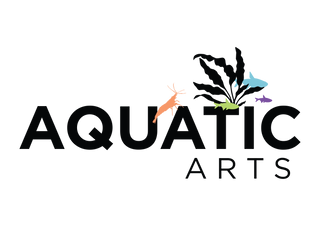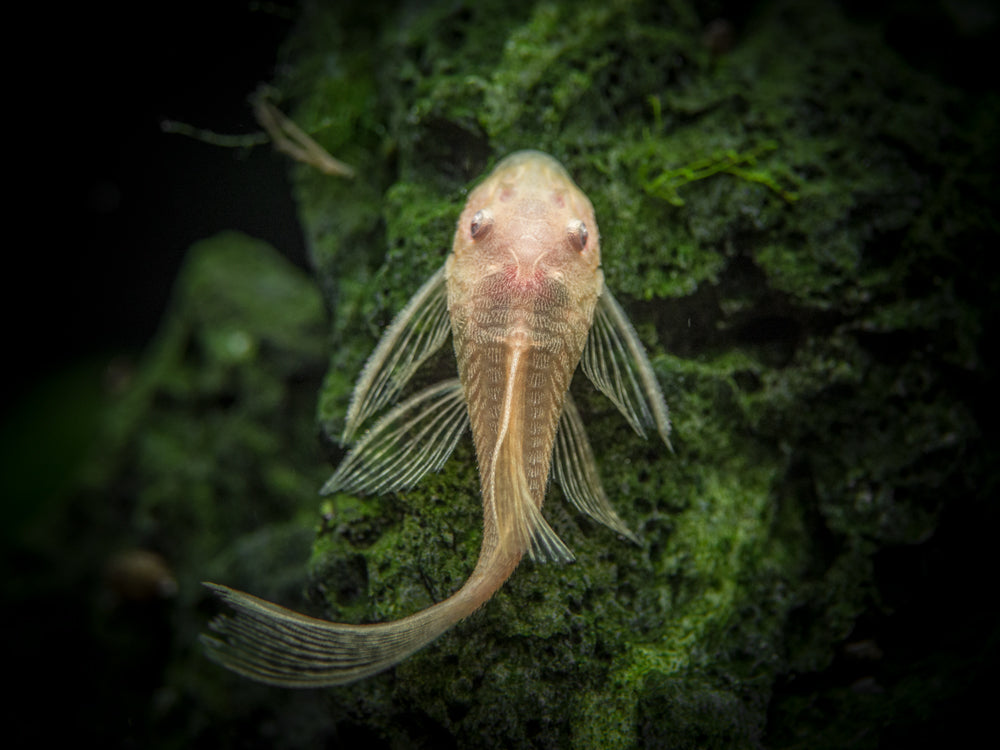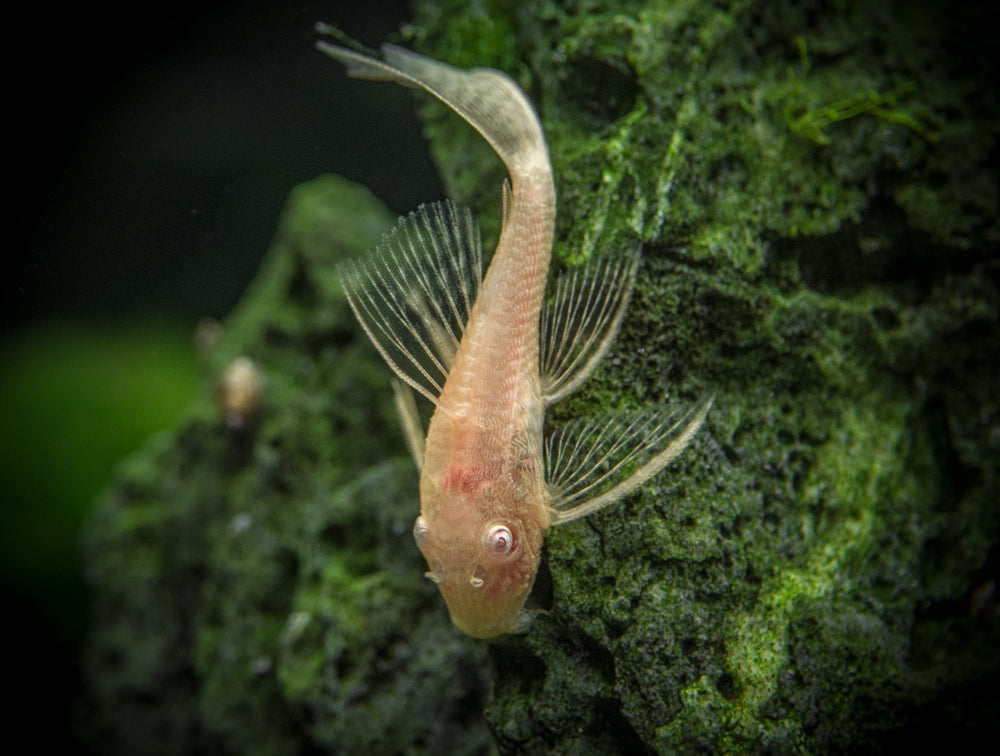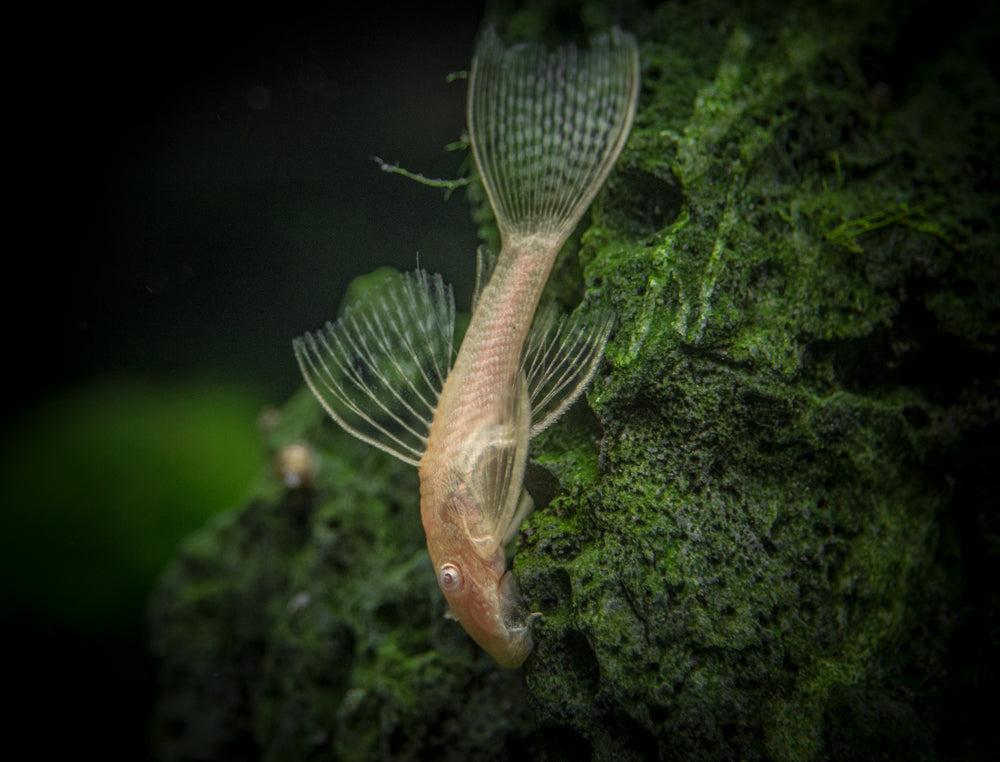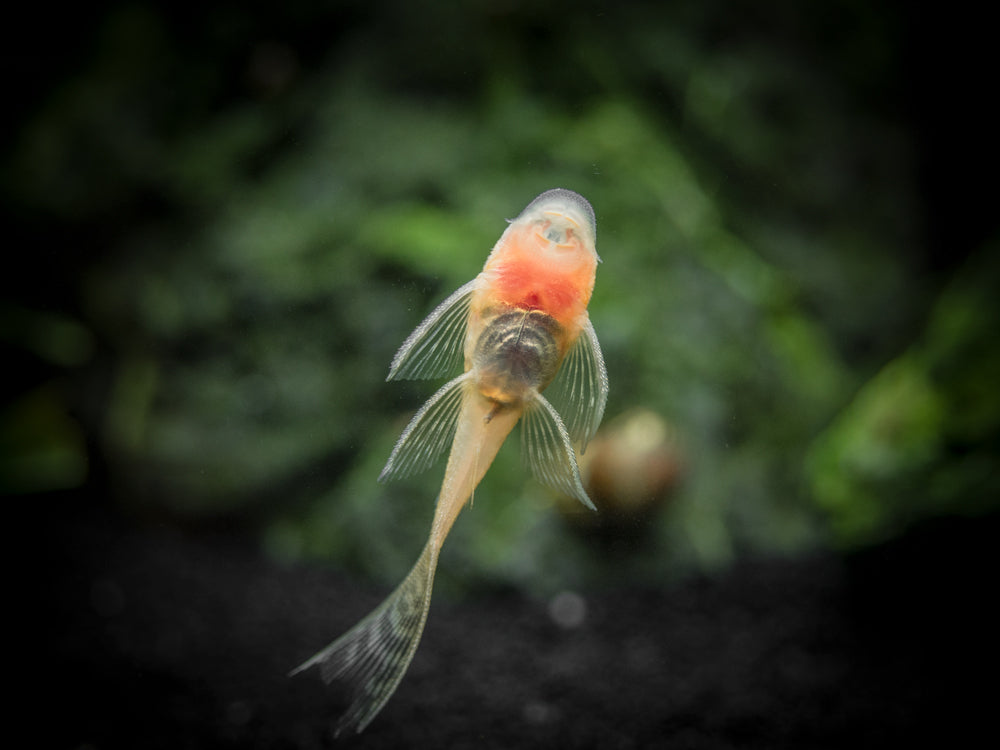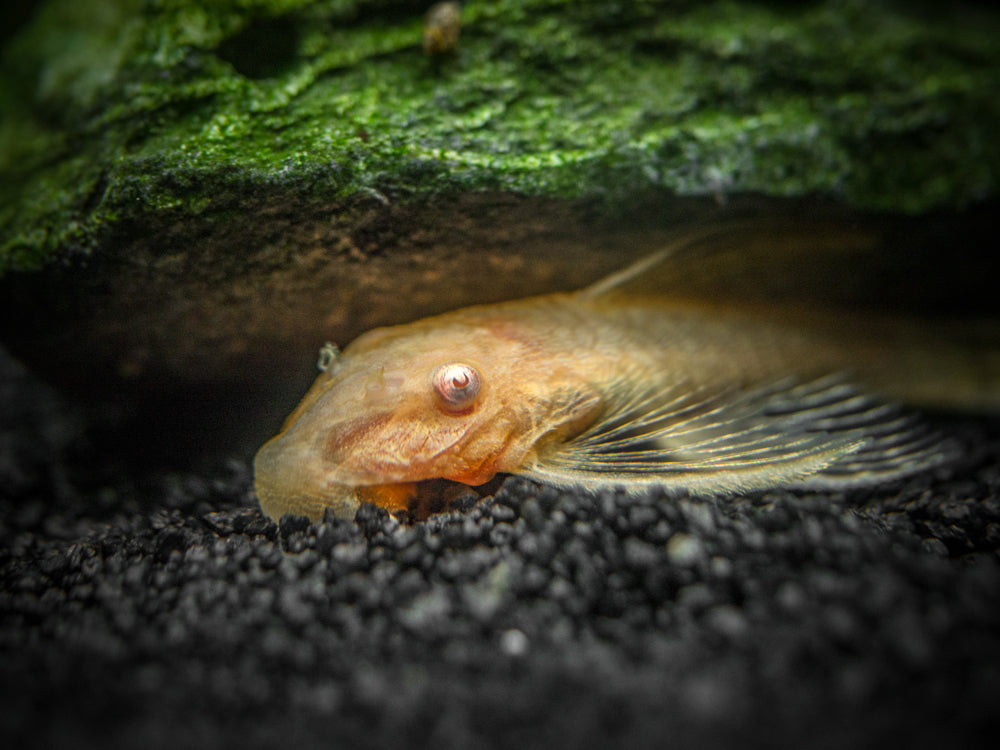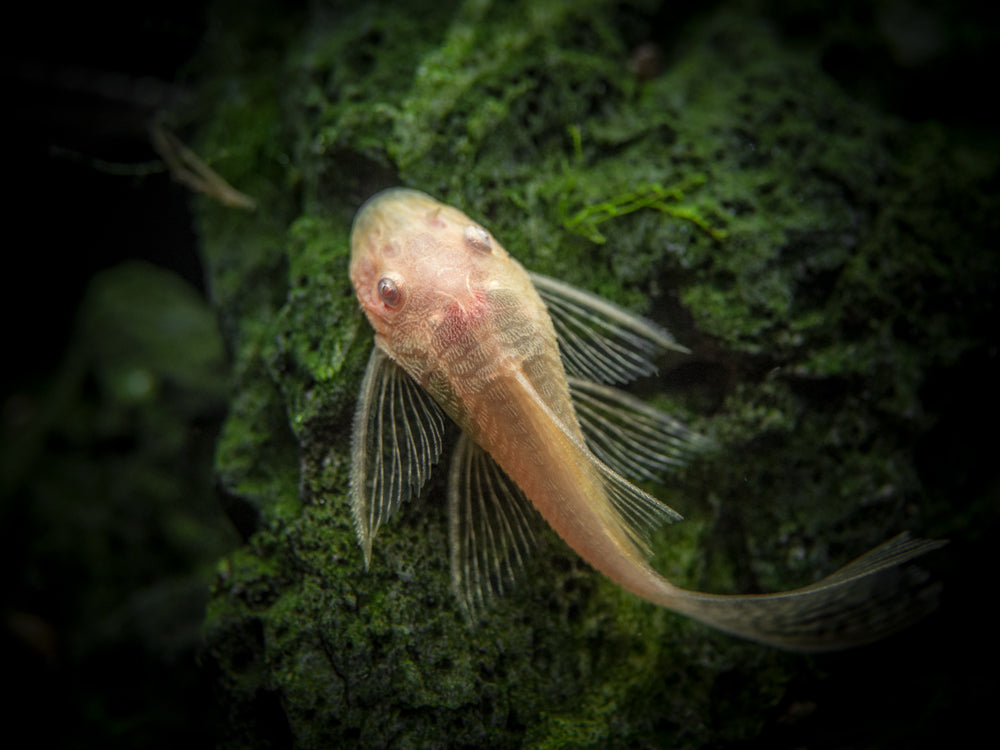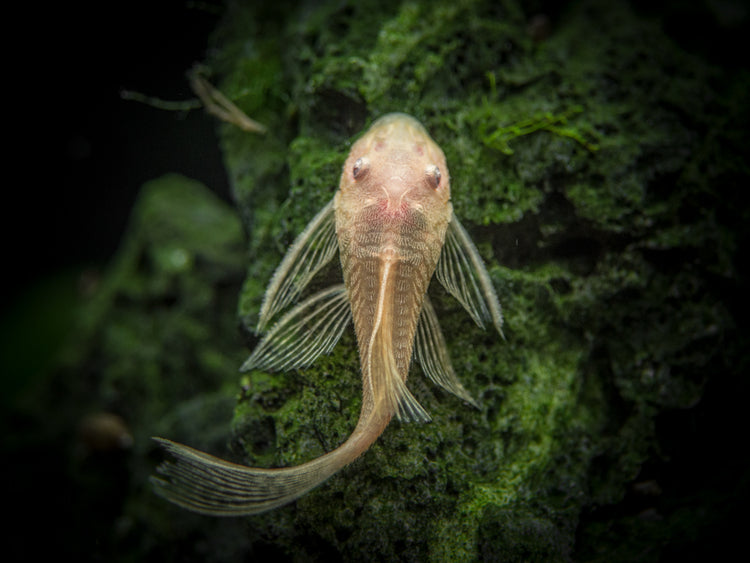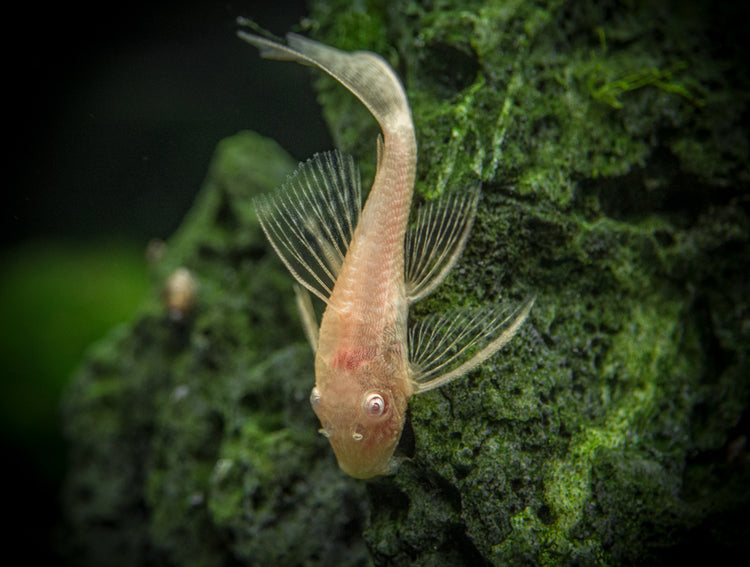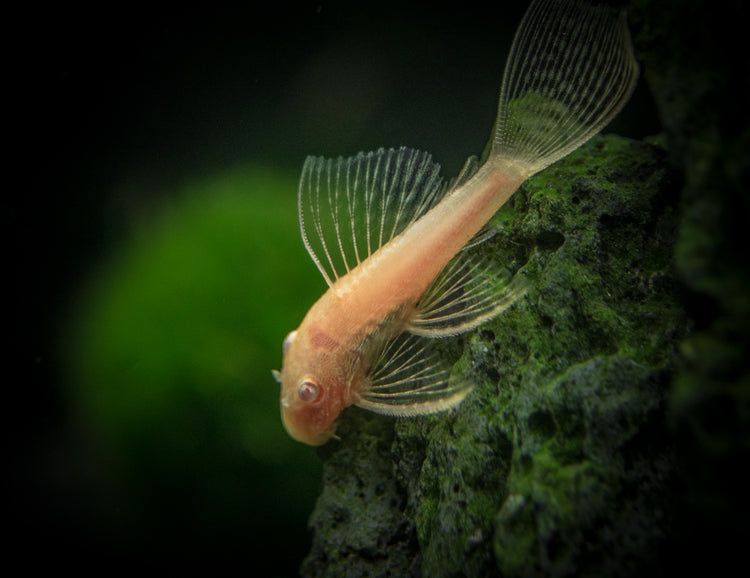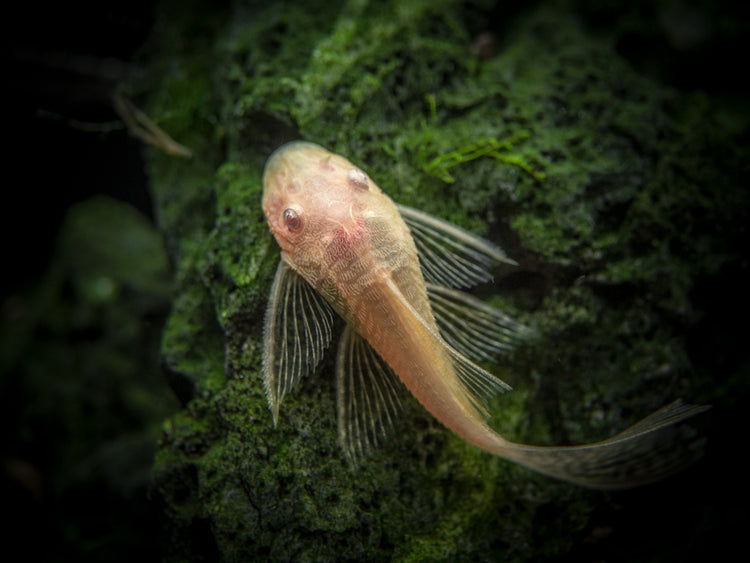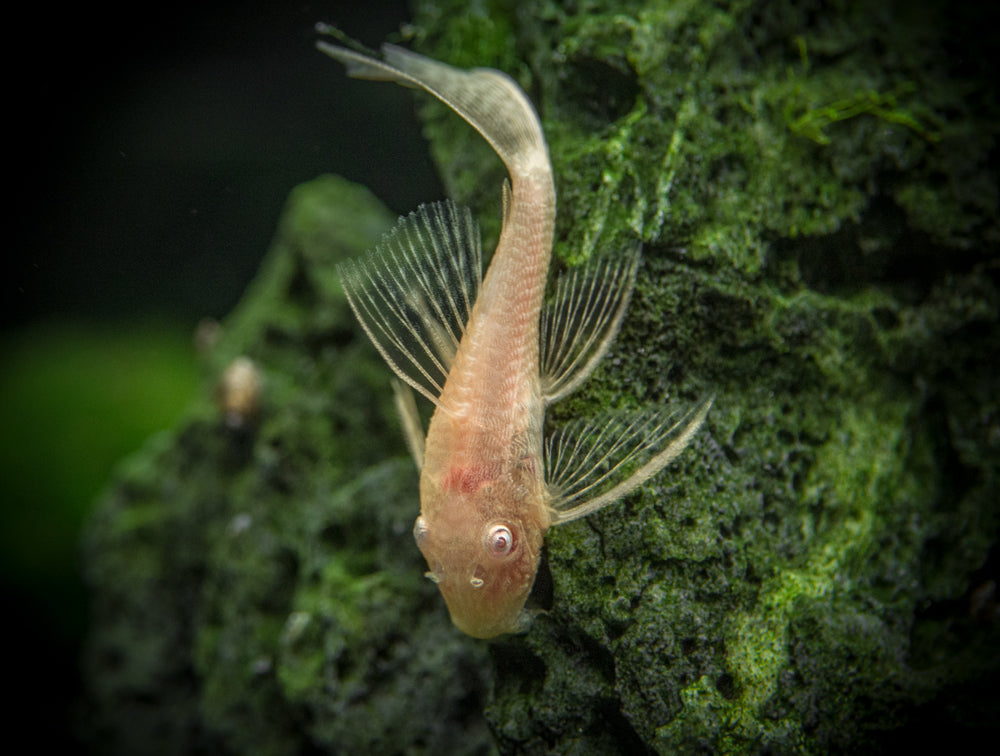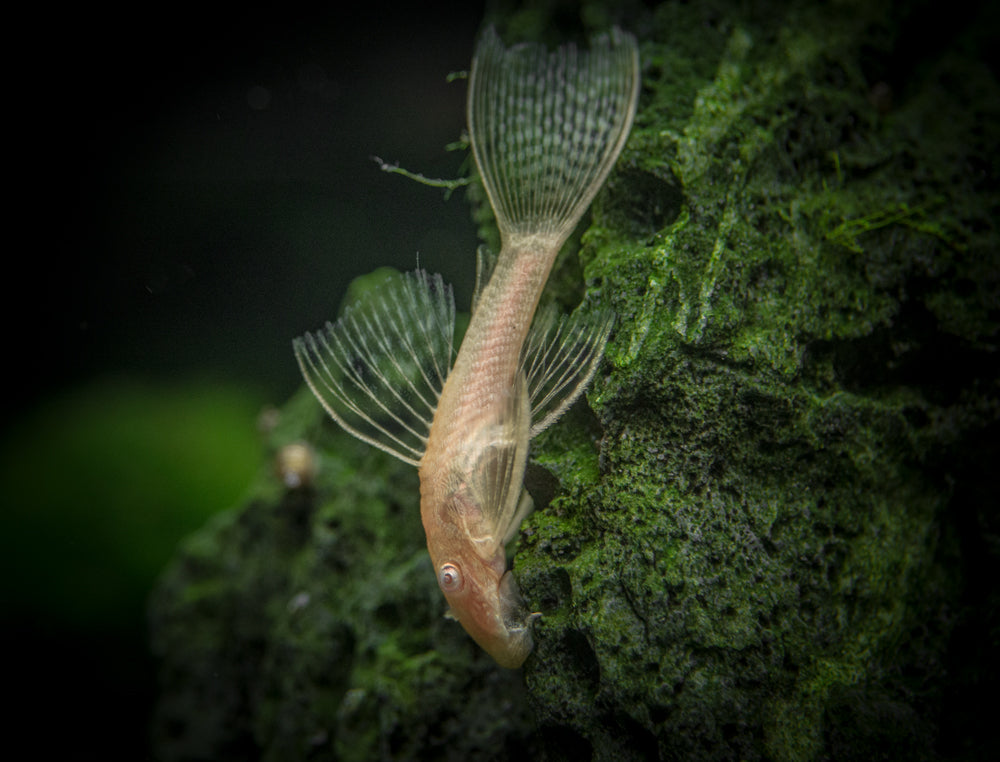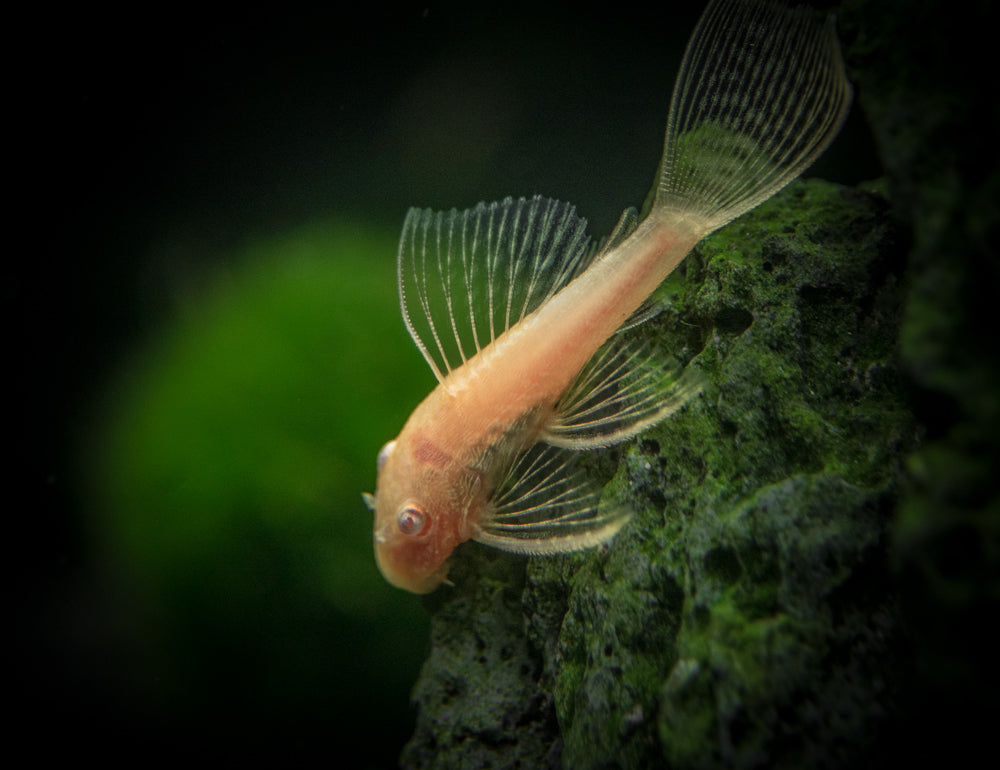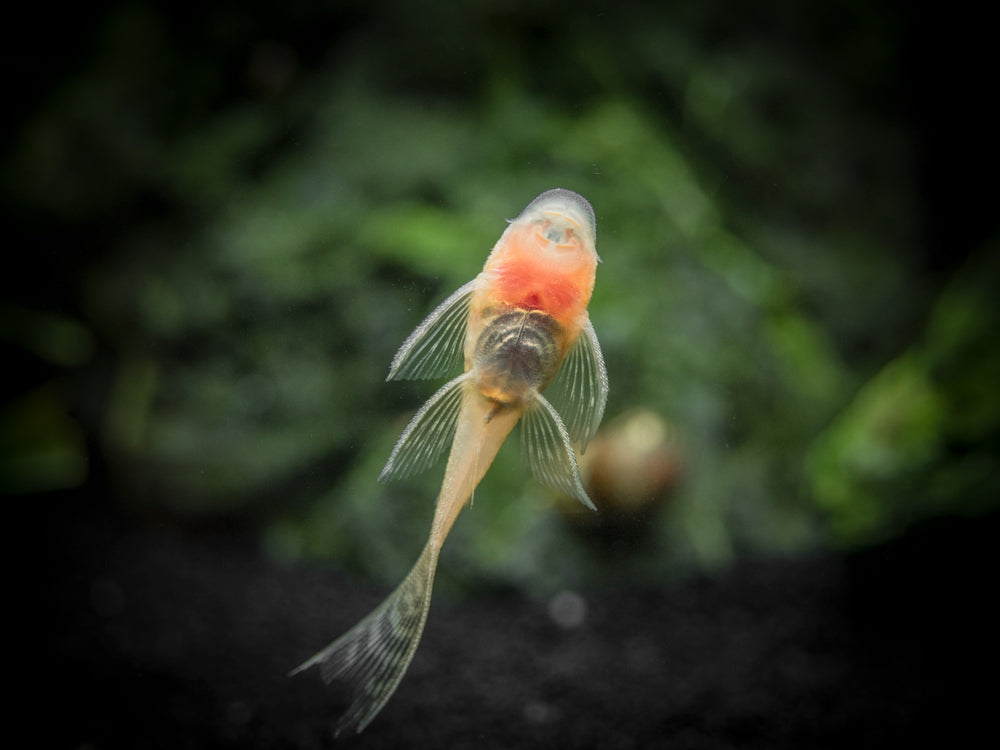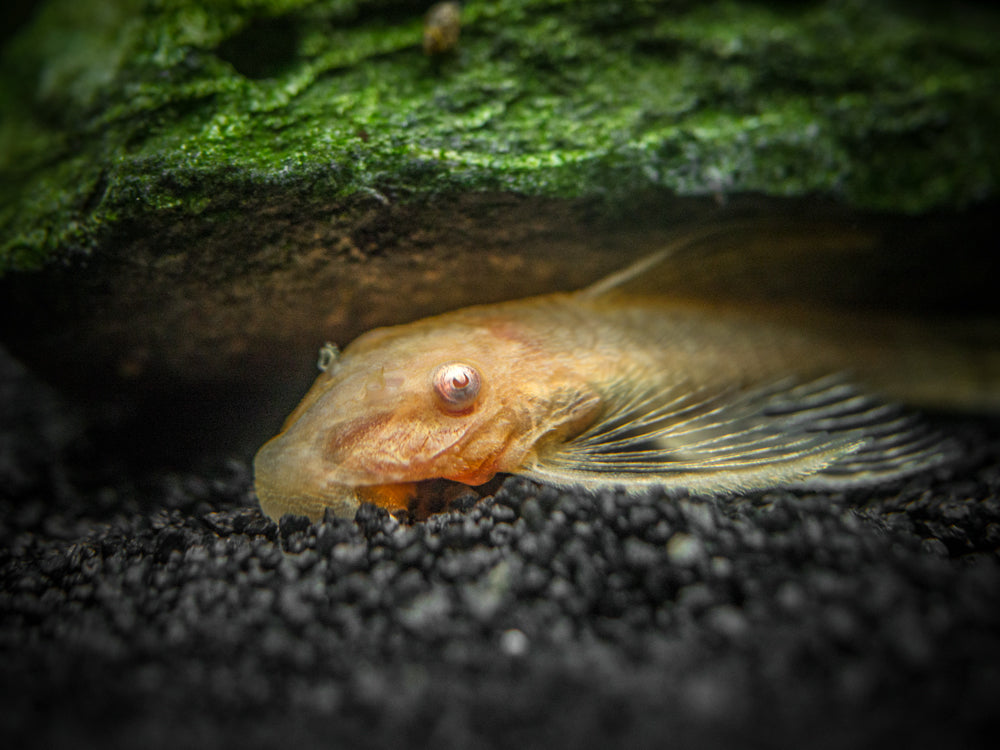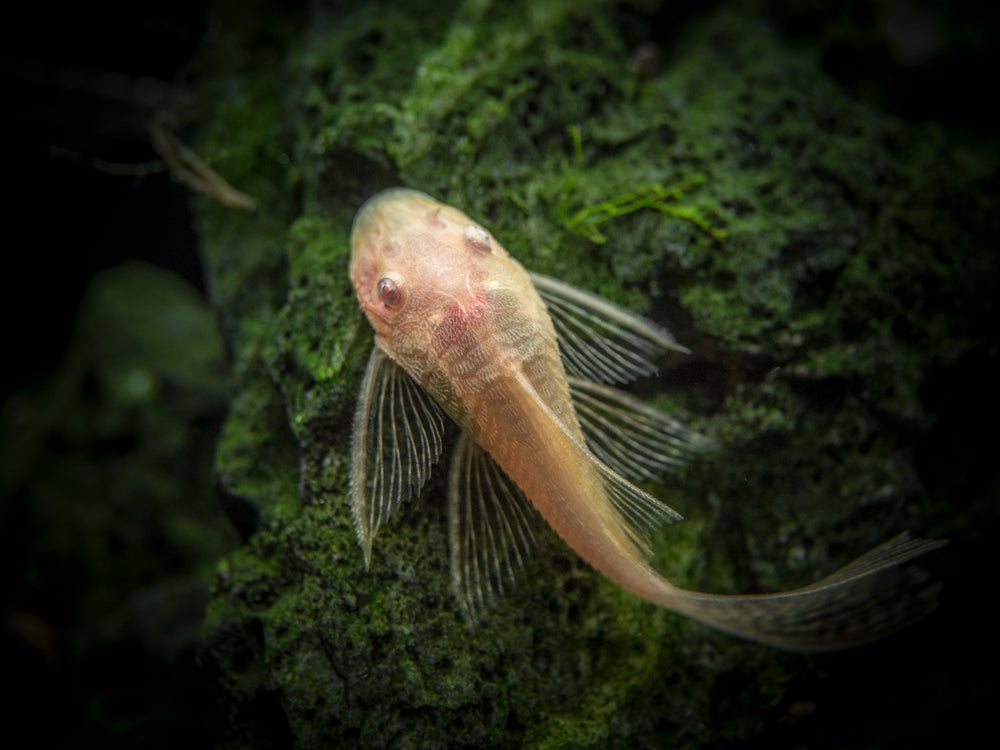Longfin Albino Bristlenose Pleco (Ancistrus cf. cirrhosus var. "Longfin Albino"), Tank-Bred
- In stock, ready to ship
- Backordered, shipping soon
* For the safety of our animals, we now ship live fish exclusively via UPS Next Day Air. If your order contains this item, you will only see UPS Next Day Air as a shipping option during checkout *
- Very peaceful and hardy
- At a maximum size of 4 to 5 inches, this is a very practical and manageable fish
- Will not bother most plants, but will likely help with algae control, especially as a juvenile. It will also scavenge and consume most uneaten fish food.
- Unique appearance, as well as plenty of personality.
- Temperature: 72° - 86° F (22° - 30° C)
- pH: 6.5 - 7.5 (flexible as long as sudden changes are avoided)
- KH: 6 - 10 dKH
- Minimum tank size: 30 gallons
- Diet: Omnivorous, but meatier foods should only be fed sparingly
- Social behavior: Generally solitary, but will socialize somewhat, especially during breeding.
- Origin: Tank-bred, but indigenous to South America
- Average adult size: 4 - 5 inches (10 - 13 cm)
- Average purchase size: Juveniles: 1.2 inches (2.5 - 3 cm), Subadults: 2+ inches (5+ cm)
For the safety of our animals, we only ship live fish, crabs, and select other inverts exclusively via UPS 1 Day Air. If your order contains this item, you will only see UPS 1 Day Air as a shipping option during checkout. If other items are in your cart that can ship with 2 day or standard shipping options the only shipping method you can still select is UPS 1 Day Air.
UPS 1 Day is a description of the duration of time a shipment will spend in transit once it has been shipped. This does not guarantee the package will be shipped the same or next day from which the order was placed.
Shipping Schedule for this service
Current Handling Time:
1-9 business days
Here at Aquatic Arts, we consider the welfare of the live animals we are shipping to be of the foremost importance. This process is much more involved than simply creating a shipping label and affixing it to a box. Depending on the order, it takes from 4 to 7 people to complete this process properly. We check the weather conditions here where they fly out of the Indianapolis UPS facility and the destination for each shipment. We start early each morning and go through a multi-step process to have the day's shipments prepared in time for the UPS pickup. The volume of orders in our system also affects the processing time. Therefore our stated handling time is 1-9 business days.
Shipping Rate
Pricing is by size of package needed to fill entire order and distance it must travel. It will be calculated at checkout.
